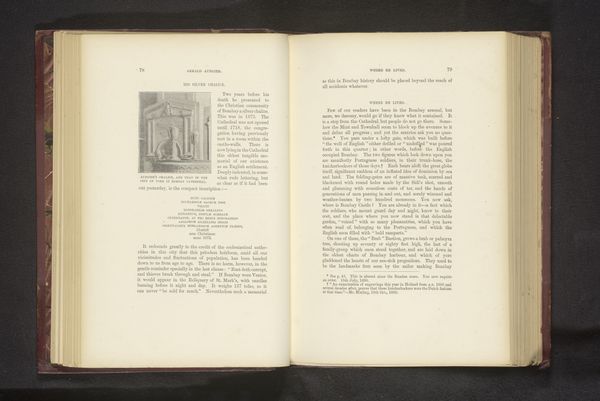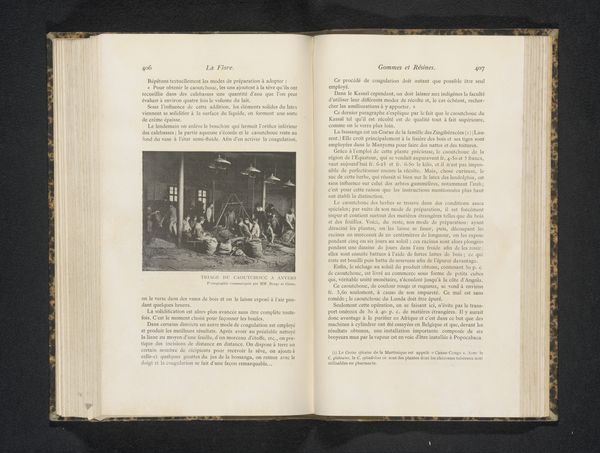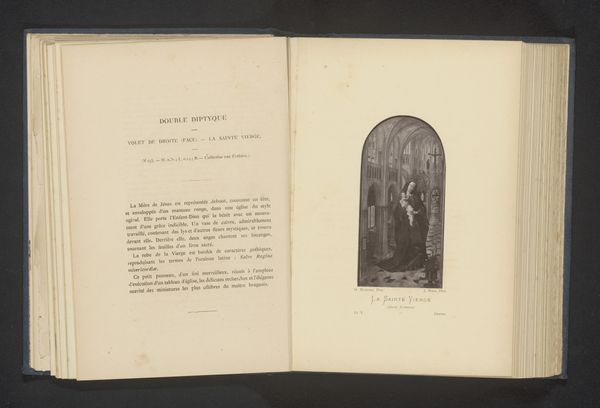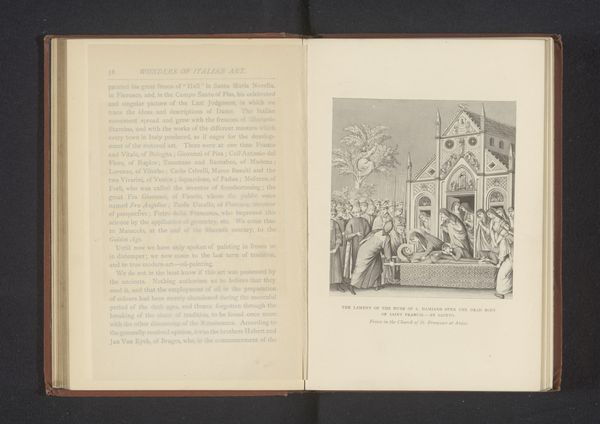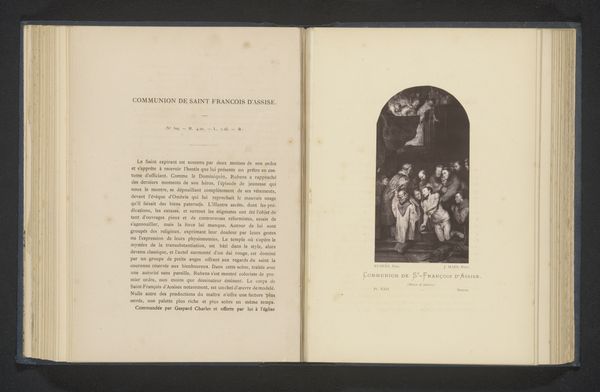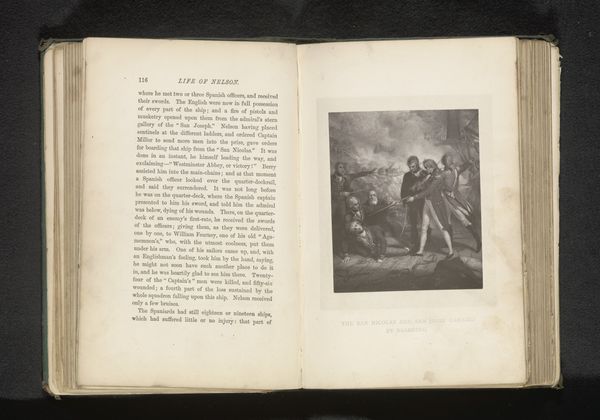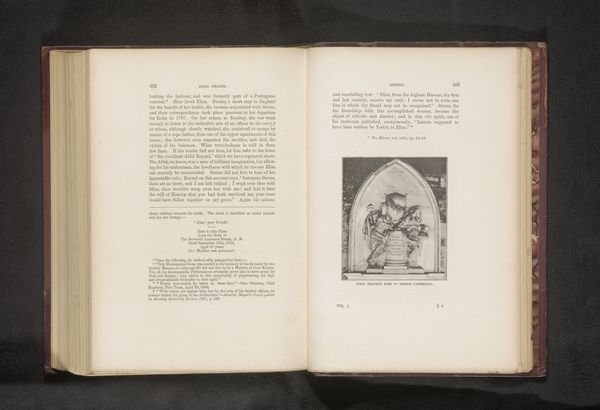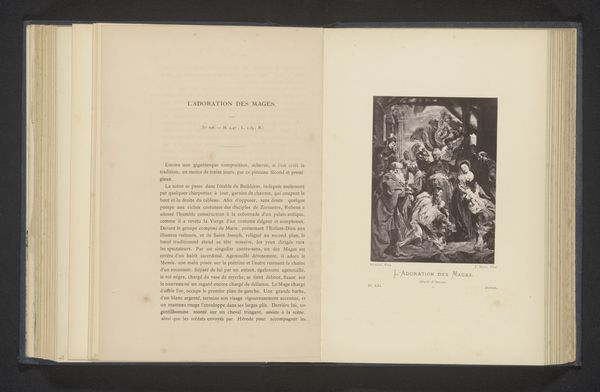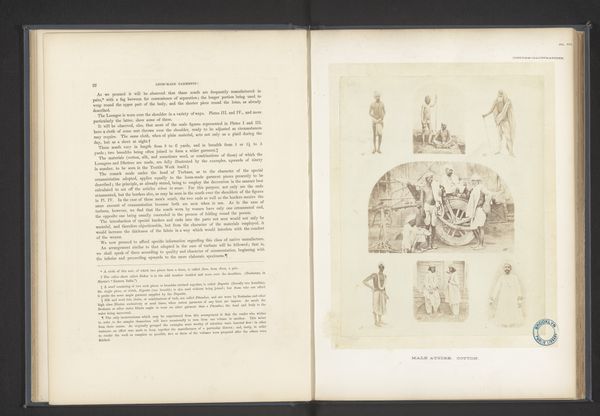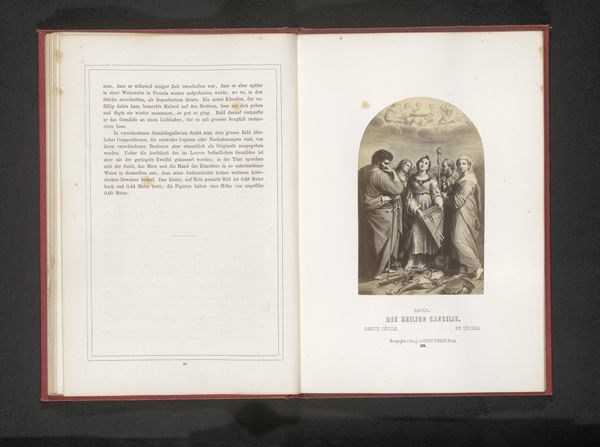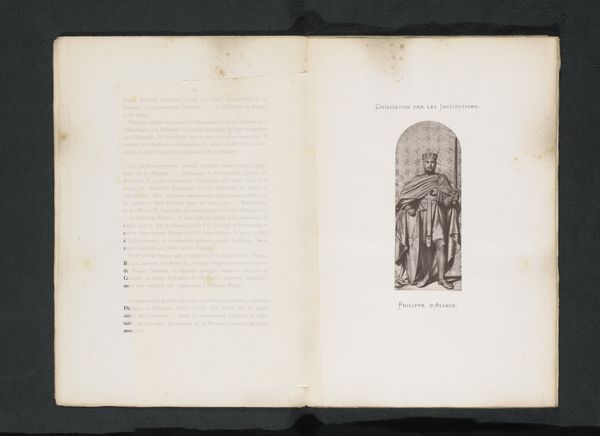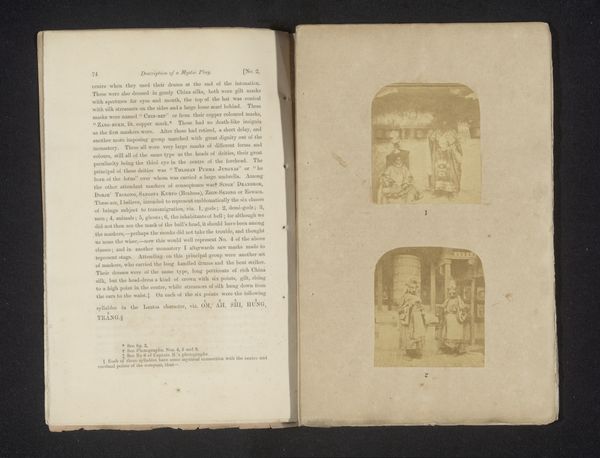
print, engraving, architecture
# print
#
landscape
#
islamic-art
#
engraving
#
architecture
Dimensions: height 77 mm, width 95 mm
Copyright: Rijks Museum: Open Domain
Curator: Let's turn our attention to this print titled, "Tomb at Champanir, circa A.D. 1500." Although attributed to an anonymous artist, it provides a captivating view of architecture in India. The print itself originates from before 1893. Editor: It strikes me as almost ghostly. The stark contrast of the engraving gives the structure a weathered, skeletal presence against what seems to be a desolate landscape. Curator: Indeed. Notice the deliberate lines defining the structure’s form. The artist uses cross-hatching to convey depth and texture, giving shape to the ruins’ material presence. The use of linear perspective also draws the viewer's eye towards the tomb, centralizing its importance within the scene. Editor: It is undeniably captivating. Considering its age, what can you tell us about how the print itself might have been made and what significance the original architecture held in Champanir, this particular location in India? The evidence of visible decay would indicate how this structure was received throughout time, or perhaps how neglected its production was due to shifting labor circumstances. Curator: Champanir was indeed a significant historical city, reflecting a blend of Islamic and Jain architectural styles. It served as a regional capital, boasting intricate mosques and tombs. These structures display skilled craftsmanship in stone masonry. The choice of printmaking—likely engraving, looking at the clarity and fineness of the lines—suggests a desire to disseminate this visual information and, likely, cultural achievement to a wider audience. Editor: It’s also interesting how the print mediates our relationship with a real location. The choice to present it within the book context invites consideration. Perhaps that points us toward consumption habits relating to documentation, preservation of memory, as well as imperial power? Curator: That's astute. Now that I consider the architecture through the lens of consumption and wider imperial history, it speaks to shifting paradigms. The artwork presents multiple layers of meaning which allow us to better perceive that cultural intersection. Editor: Yes, through examining materiality and process, we gain new insights beyond solely composition. I think both avenues encourage a broader appreciation for this compelling piece.
Comments
No comments
Be the first to comment and join the conversation on the ultimate creative platform.
